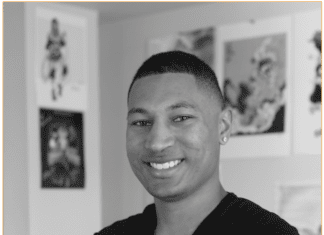Rod Anami is the author of Becoming a Rockstar SRE, we got the chance to sit down and find out more about his experience of writing with Packt.
Q: What are your specialist tech areas?
Rod: Site reliability engineering, DevOps, Middleware, Cloud engineering, Node.js, systems management
Q: How did you become an author for Packt? Tell us about your journey. What was your motivation for writing this book?
Rod: Yogesh, a Packt, Business Development Executive, contacted and invited me to write a book about site reliability engineering. Immediately I got extremely excited about the idea of writing a technical book about my profession (and passion). Later in identifying the book prospect, he said another person was interested in writing a similar book. He asked me if we could work as authors for an SRE book. I said I didn’t mind sharing the book content with another person, and Jeremy and I started this journey together. Sharing the book authoring was one of the best decisions in my professional life; we have distinct technical backgrounds and writing styles, which made the book even more enjoyable.
They say that if you want to be an accomplished human being, you must have a son, plant a tree, and write a book. Now I can say my list is complete!
Q: What kind of research did you do, and how long did you spend researching before beginning the book?
Rod: After writing eight chapters, I asked that myself. I started my journey as a DevOps engineer and later as a site reliability engineer in 2017. Since I’m a seasoned engineer, I didn’t need to research the SRE profession itself, but for all chapters I wrote, I studied to bring the most accurate and fresh information to the readers. I estimated I’d spent two hours per page writing, researching, and crafting diagrams.
Q: Did you face any challenges during the writing process? How did you overcome them?
Rod: Yes, often I found conflicting information or multiple aspects of the same concept. I had to opinionate based on my experience with several customers and organize the chapters so the reader could have a concise understanding of their topics. I used the “important notes” throughout the book chapters to ensure the reader gets a good sense of the different trends and schools of thought.
Q: What’s your take on the technologies discussed in the book? Where do you see these technologies heading in the future?
Rod: I discussed many technologies in the book that are on edge right now. All technologies are temporary, by definition. Sometime in the future, new advents will replace current technologies and methods. I recommend keeping an eye on Kubernetes, AI-powered observability, and GitOps; they still have unrealized their full potential.
Q: Why should readers choose this book over others already on the market? How would you differentiate your book from its competition?
Rod: The compelling reason for writing this book was to focus on the site reliability engineer persona. Jeremy and I favored telling readers much more about who an SRE is and how SREs hone their skills over time. Of course, we covered all the site reliability engineering good practices and the latest technologies and tools, but we instilled them with typical SRE guiding principles, mindset, and posture.
Q: What are the key takeaways you want readers to come away with from the book?
Rod: I would summarize the book in four areas:
Who’s the site reliability engineer
How site reliability engineers make systems more reliable (and profitable)
What it takes to become a rockstar site reliability engineer (SRE)
How you develop and hone the most needed skills
Q. What advice would you give to readers learning tech? Do you have any top tips?
Rod: If you have time to study one technology only, then learn Kubernetes. Kubernetes is becoming an omnipresent tech on-premises and on the cloud. If you want to pursue a technical career path that is challenging and rewarding, try site reliability or DevOps engineering. The book has an affinity test to help you understand if you want to be a site reliability engineer.
Q. Do you have a blog that readers can follow?
Rod: Yes, I’ve been using the LinkedIn Pulse at this link:
https://www.linkedin.com/pulse/rod.anami/
Can you share any blogs, websites and forums to help readers gain a holistic view of the tech they are learning?
Rod: The book contains a “Further Reading” section for some chapters where you can find related content from multiple sources and vendors. Those recommended readings will expand and consolidate the reader’s knowledge of the chapter topics. Since this is a numerous disciplines book, it’s impossible to close on a small list of blogs and sites.
Q. How would you describe your author’s journey with Packt? Would you recommend Packt to aspiring authors?
Rod: I’ve learned much with Packt about writing and publishing a technical book. They support their authors with training and multiple reviews of the content to ensure the book has the highest quality possible. Jeremy and I felt comfortable with the result knowing many people have checked it. If you like to explain complex technical concepts engagingly, Packt can help you transform that into a book.
Q. Do you belong to any tech community groups?
Rod: I belong to many tech community groups, including the Usenix and CNCF. We created an SRE professional networking group inside LinkedIn and a Slack workspace for all site reliability engineers worldwide. You can find more information about it here:
https://www.linkedin.com/groups/9257173/
You can join our Slack workspace at this link:
https://sreterminus.slack.com/
Q. What are your favorite tech journals? How do you keep yourself up to date on tech?
Rod: There’s no single information source for site reliability engineering; there are plenty of materials and courses available, which is good. I like to read articles from SRECon installments and other conferences dedicated to site reliability engineering. More information at this link: https://www.usenix.org/srecon
Q. How did you organize, plan, and prioritize your work and write the book?
Rod: Organizing my work for the book and reserving time for it was the most challenging thing ever! First, we had to devise a solid and sound book outline with all intended parts, chapters, and summaries. This outline helped Jeremy and me understand how much work we had in front of us. Then we had to agree on a schedule that accommodated our daily job activities and vacations. I committed some fixed nights and weekends to write, research, and review the book’s contents. The support from my family was crucial to finish my chapters on time.
Q. What is that one writing tip that you found most crucial and would like to share with aspiring authors?
Rod: As a non-native English speaker, I had to do additional reviews of my write-ups to ensure they would be grammatically acceptable. On the other hand, I had the advantage of naturally explaining things in a non-elaborated manner. I built my English dictionary to include specific words to make my statements semantically accurate and engaging.
You can find Rod’s book on Amazon by following this link: Please click here









